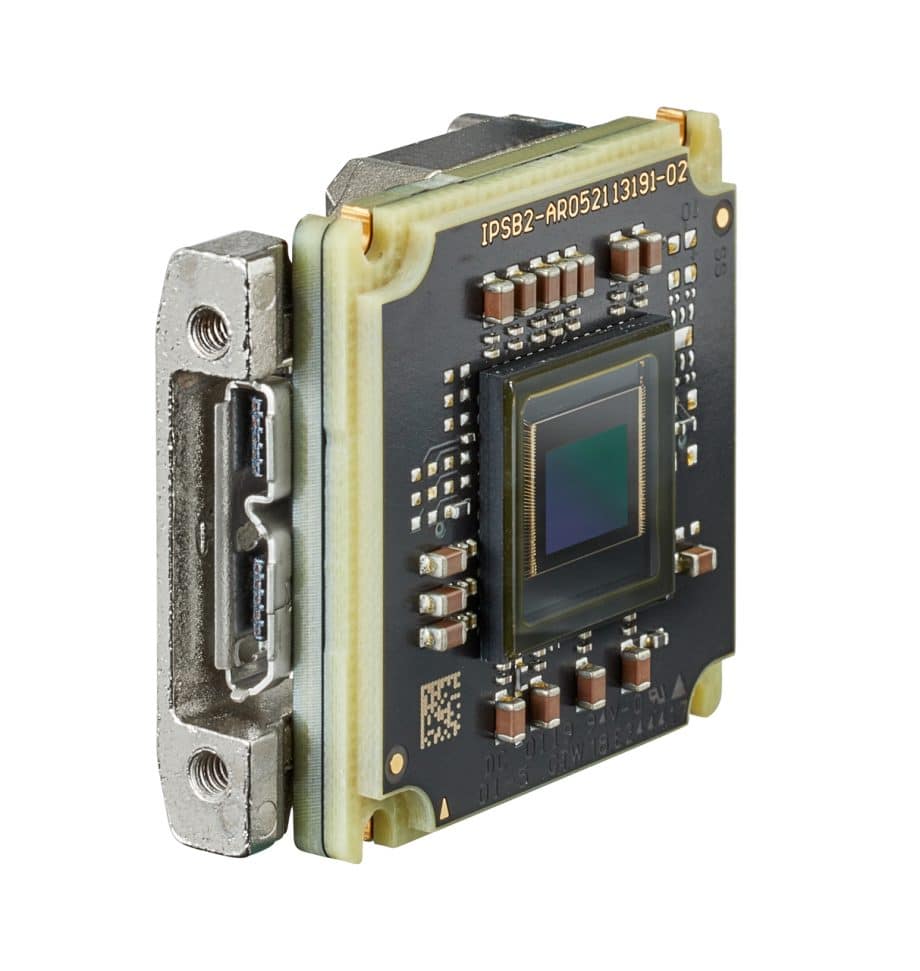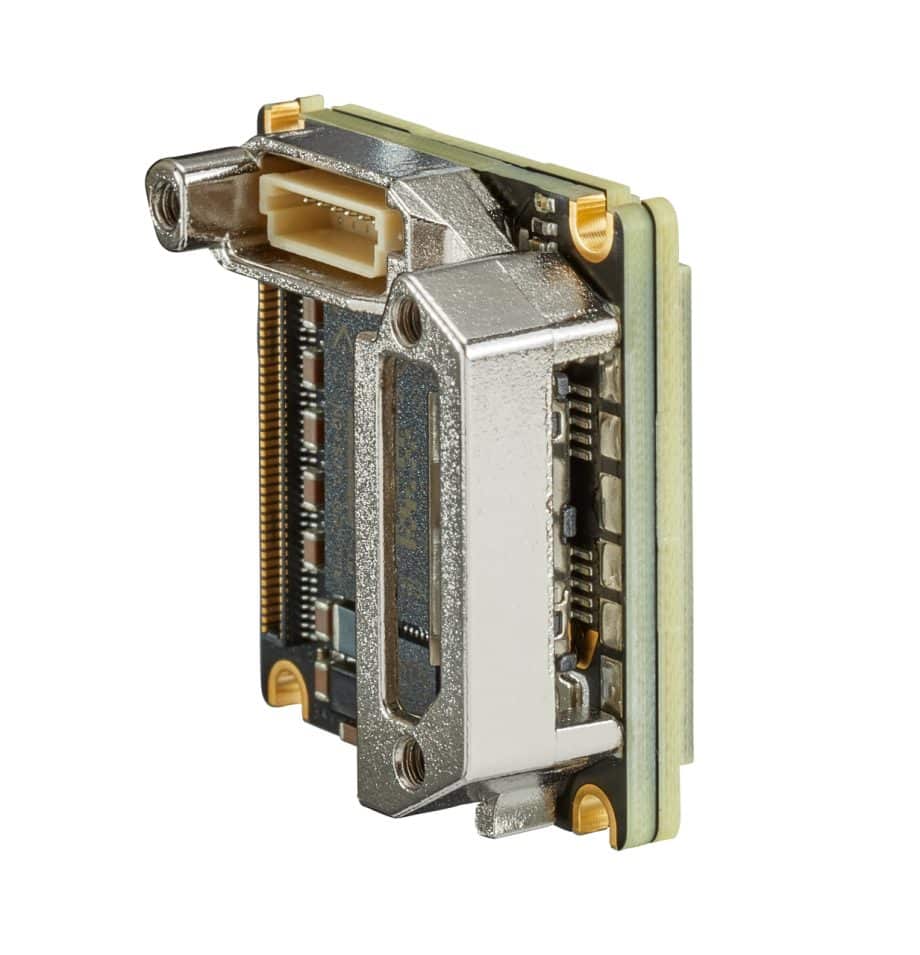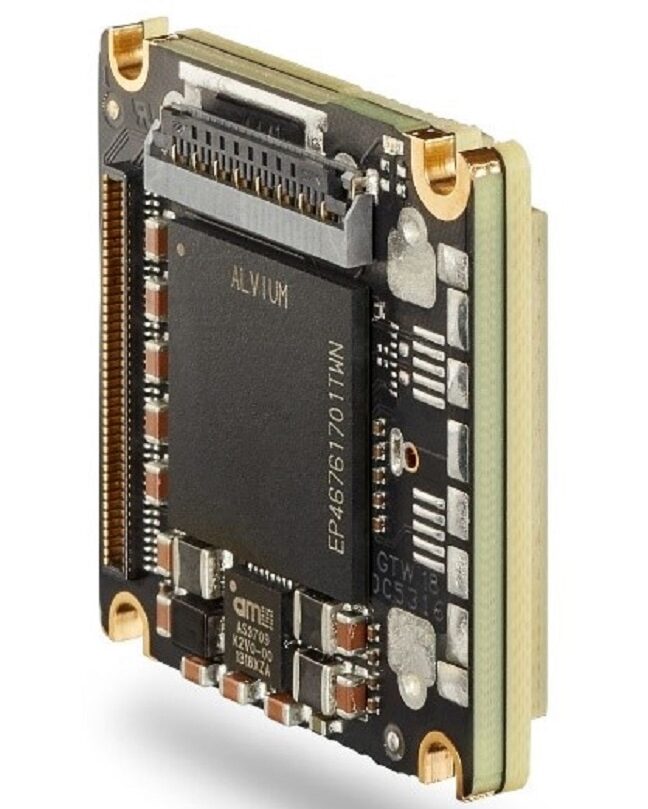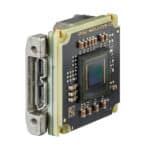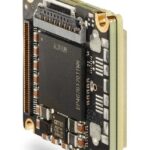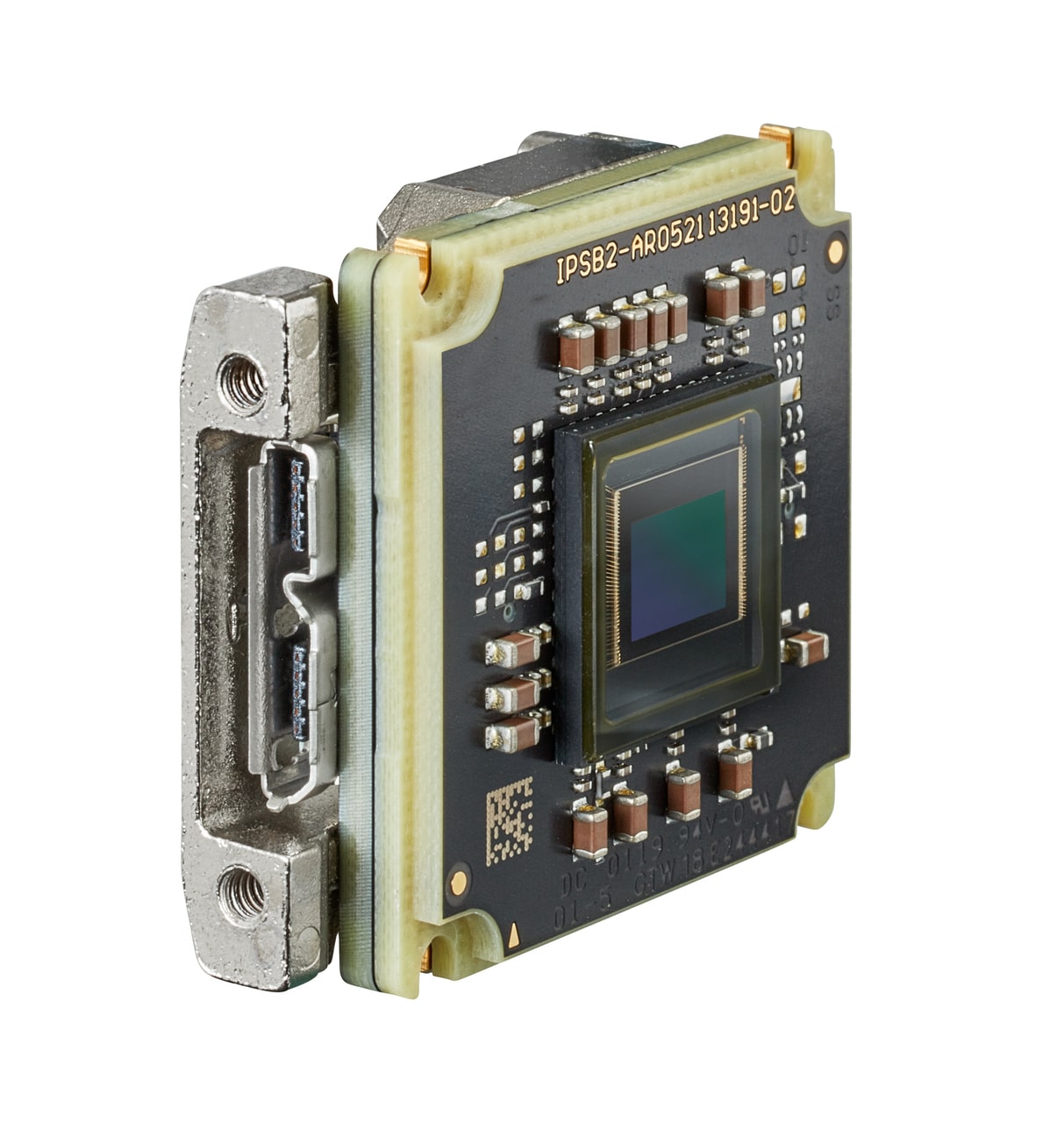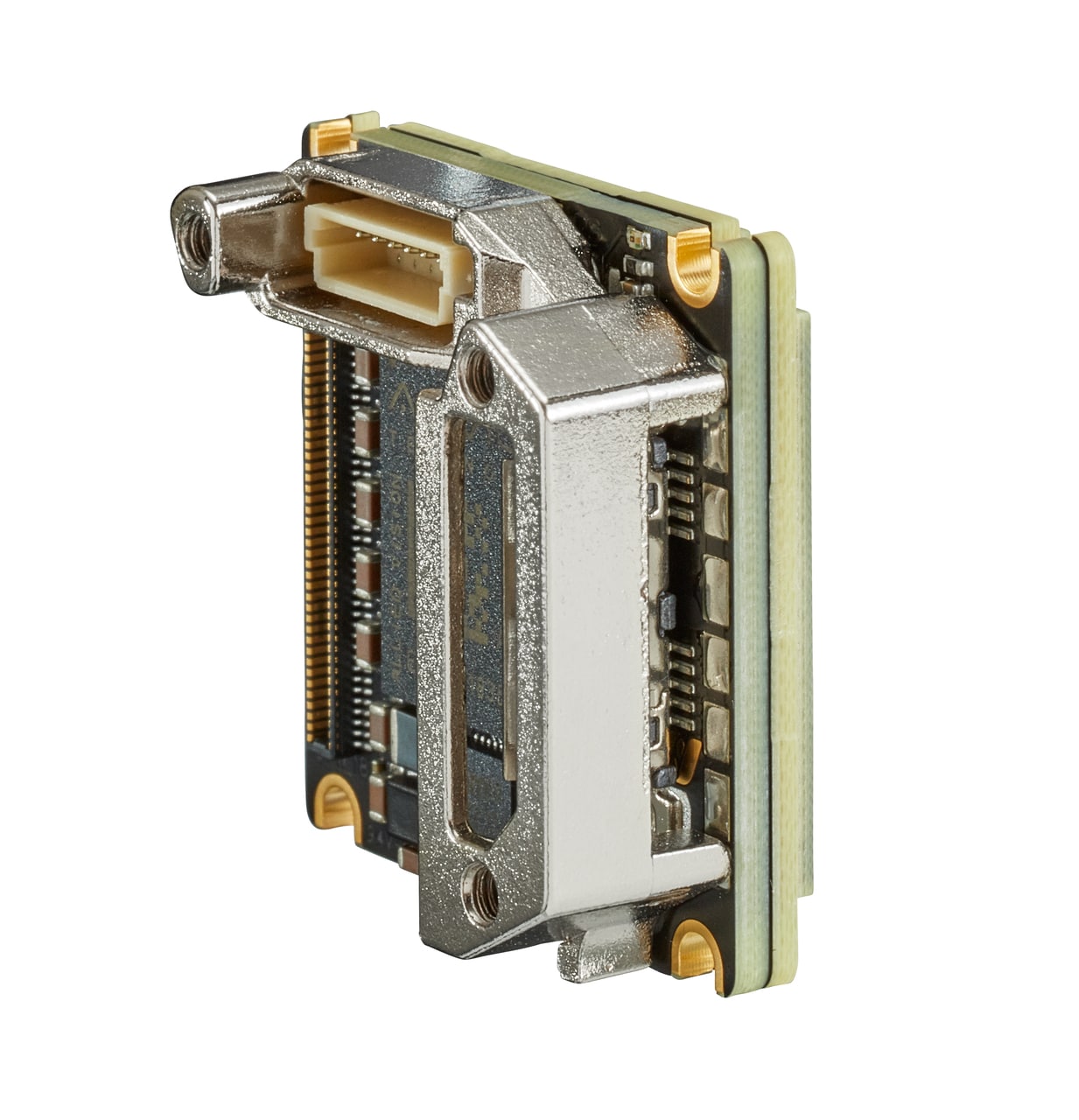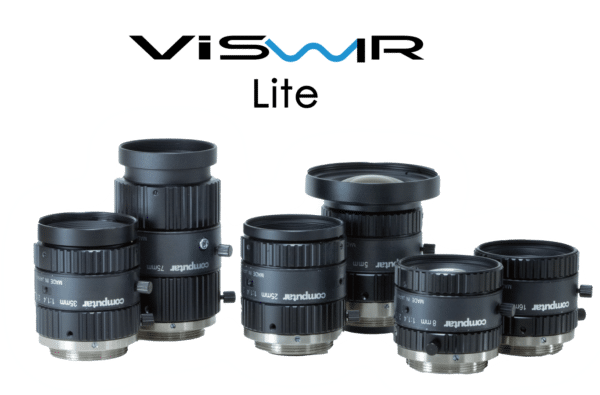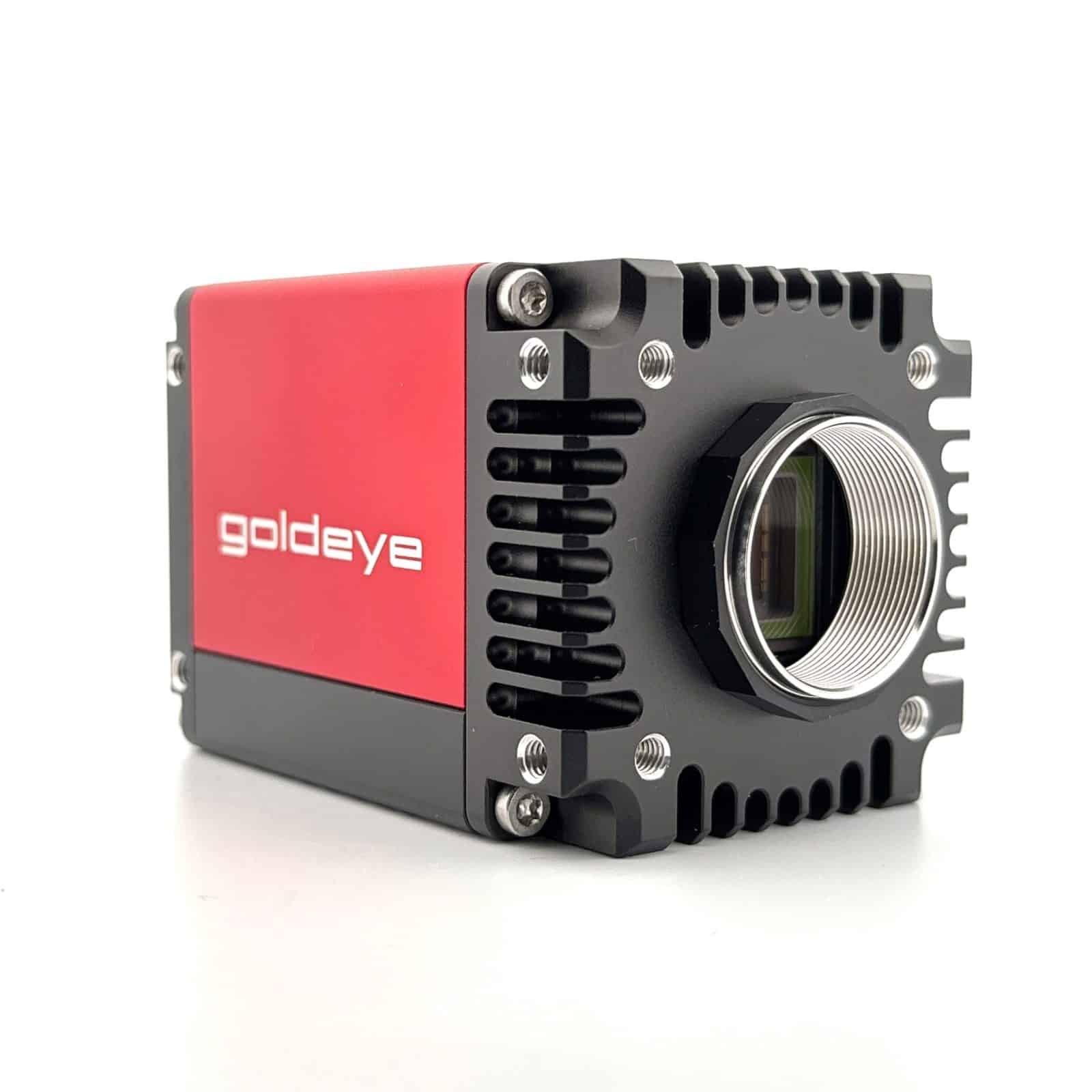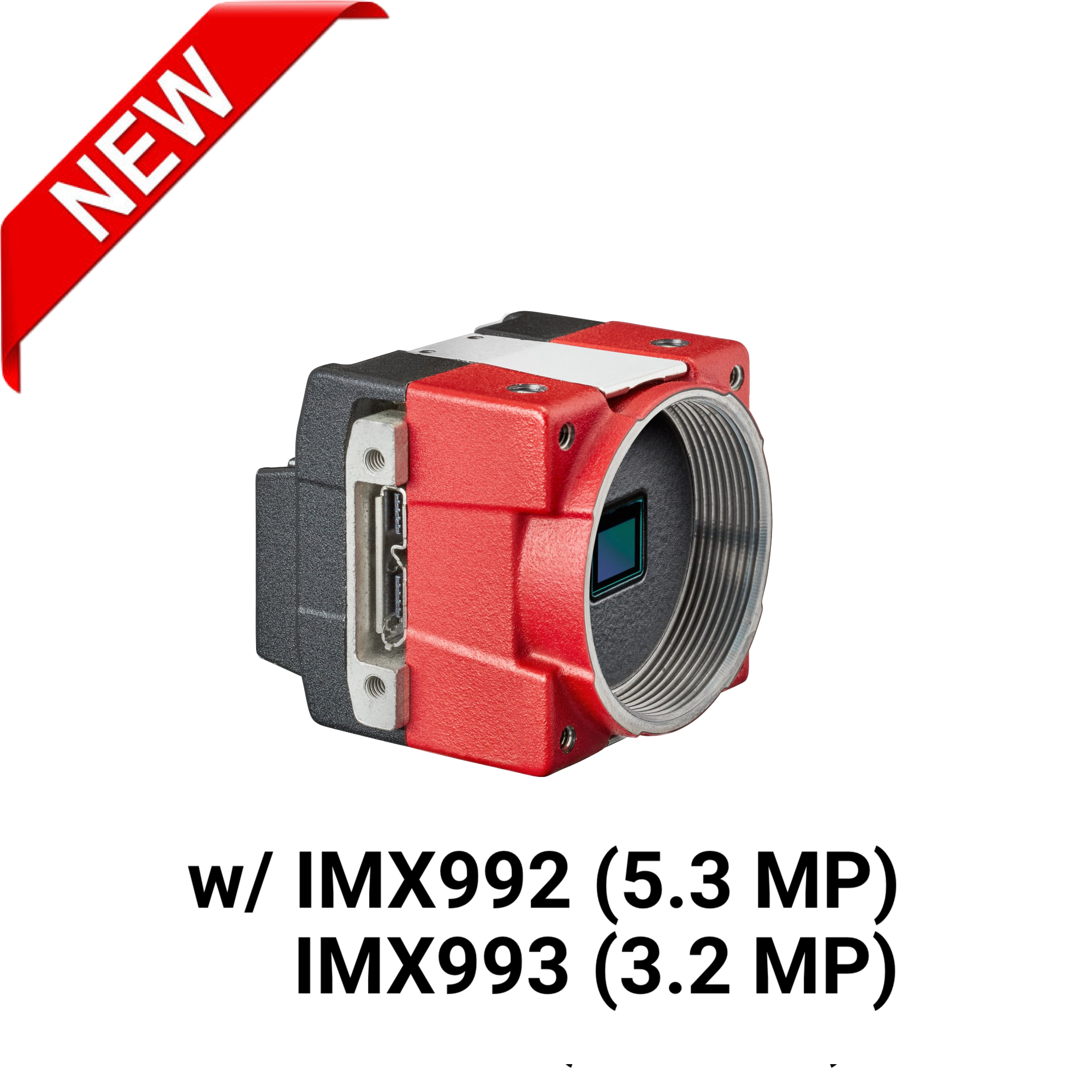Low SWaP camera cores with Sony SenSWIR technology
Benefits at a glance:
Alvium 1800 U SWIR cameras are the smallest industrial grade low-power uncooled SWIR core modules on the market, making them the ideal match for compact OEM systems used in embedded and machine vision applications. Equipped with the IMX990 and IMX991 SenSWIR InGaAs sensors from Sony, the 1800 U SWIR cameras deliver high image quality and frame rates at small size, low weight, power, and costs (SWaP+C). With its USB3 Vision compliant interface and industrial-grade hardware, it is your plug & play camera for setting up various machine vision applications beyond the visible whether they are based on a PC or embedded system.
- Small size, low weight, power, and costs enable you to build SWaP+C solutions:
- Bare-board very compact system designs
- Low power consumption <2W ideal for battery powered system
- Innovative digital InGaAs sensors with the industry’ smallest pixels and a high-precision sensor alignment at production time provide you great image quality, which will increase the accuracy of your inspection system
- High frame rates and flexible ROI control options empower you to speed up processes on-demand
- On-board Automatic Gain Control (AGC) and Contrast Control will enhance your vision quality under challenging conditions, like: 24h day & night imaging or when seeing through dust or haze
- A wide operating temperature range and on-board temperature monitoring secure you a reliable operation under diverse conditions
Machine vision goes embedded with the new Alvium 1800 SWIR camera models with Sony SenSWIR sensor technology
Smallest industrial grade low-power uncooled short-wave infrared (SWIR) core modules on the market ideally suitable to build compact OEM systems used in embedded and machine vision applications.
ALVIUM® is a powerful, energy-efficient processor including an Image Signal Processor (ISP) and an Image Processing Library (IPL). It allows image corrections and pre-processing on the camera to optimize image quality and throughput for your application while offloading your CPUs on the embedded system.
The new Alvium models in detail
Available with either USB3 Vision or MIPI CSI-2 interface with GenIcam compliant feature control, industrial grade hardware, and drivers, Alvium SWIR core modules provide a plug & play feeling whenever setting up a machine vision applications beyond the visible, regardless if it’s based on a PC or an embedded system.
Alvium 1800 C is a small, high-performance industrial camera.
- On-board ISP functionality: Advanced image corrections and free up your embedded board for other processing tasks
- One driver fits all: Quickly integrate Alvium cameras and exchange models easily.
- Intelligent power management: Design low-power or even battery-powered systems.
- Image reproduction quality: Get the best out of your lens-to-sensor combination by high-precision Alvium Sensor Alignment.
Auto features:
- Auto exposure
- Auto gain
- Auto features regions control
- Auto features algorithms control
Other image controls
- Binning
- Black level
- Contrast
- Exposure time
- Gain
- Gamma
- Defect Pixel Correction (factory calibrated)
- FPNC (factory calibrated)
- Region of interest (ROI)
- Reverse X/Y
USB3 Vision & MIPI CSI-2 interfaces
- USB 3.1 Gen 1
Industrial-grade hardware: Design reliable applications by the Micro-B USB 3.1 Gen 1 connector with screw locks.
Install our VIMBA Suite and get your first images easily.
- MIPI CSI-2
High bandwidth: Use the powerful MIPI CSI-2 interface with up to 4 lanes.
Precise image acquisition via triggering function and flexible frame rate control
Many MIPI CSI-2 sensor modules can only stream images and don’t allow the precise image acquisition timing needed in industrial applications. Allied Vision’s Alvium 1800 C series features for the Nvidia Jetson systems advanced triggering functions that machine vision system engineers had been missing in embedded vision:
- Hardware trigger for lowest latency
- Software trigger
Furthermore, the Alvium 1800 CSI-2 cameras now support flexible frame rate control. This allows the user to set a fixed frame rate for the cameras according to his needs.
The triggering function and the frame rate control are available as custom controls in the Video4Linux2 (V4L2) framework or directly in the camera via Direct Register Access (DRA).
Improvements with SenSWIR sensor technology by Sony
- Visible spectral range extension (400nm – 1700nm)
Sony SenSWIR InGaAs sensors are designed with a very thin Indium Phosphide (InP) layer enabling visible light to pass through to the sensitive InGaAs layer. There are already InGaAs sensors available on the market with visible light extension, but Sony is the first manufacturer who managed to keep the quantum efficiency over the full spectral range at a relative high level (>50%). In some applications (e.g. spectral imaging, surveillance) this can help to reduce system costs as only a single camera needs to be used. - Higher inspection precision (5µm pixel pitch)
By using Copper-to-Copper connections between the indium-gallium-arsenide (InGaAs) photodiode layer and the silicon readout circuit layer instead of Indium bumps, much smaller pixel sizes of only 5µm² can be realized. This enables imaging with high spatial resolution to reveal smaller object details. - High image homogeneity
Sony SenSWIR sensors are the first sensors we have integrated into the Goldeye camera series with digital outputs. Previous analog sensors require external ADCs resulting in the typical visible vertical striped that are corrected by our NUC.
In addition, the high image homogeneity of Sony SenSWIR sensors is supported by the Copper-to-Copper connections, that Sony is using in their stacked design, to connect the InGaAs layer with the Silicon Readout IC. They ensure a much more reliable and uniform connection between the two layers vs. existing solutions using Indium bumps. - Eased filter integration
Sony SenSWIR sensors are comparatively small. Even the SXGA sensor has only a size of 1/2”. Therefore, the F- and M42- Mount options of the Goldeye’s modular concept are most-likely not relevant, so we decided to change the mount concept for the G-130 and G-030 to be the same concept as the Prosilica GT. This enables the user to screw in standard C-mount filters easily and reduces overall costs.
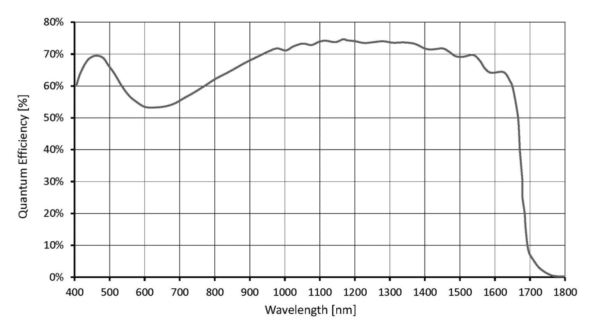
Ultra low SWaP+C SWIR single-board cameras applications
Visit our SWIR application page now!
- Semiconductor industry: Solar cell and chip inspection
- Recycling industry: Plastic sorting
- Medical imaging, sciences: Hyper- and multi-spectral imaging
- Glass industry: Defect detection through hot glass
- Agriculture industry: Airborne remote sensing
- Printing industry: Seeing hidden features
- Surveillance: Vision enhancement (for example, seeing through fog or haze)
- Security: Counterfeit detection (such as for money, faked hair, or skin)
Ultra low SWaP+C SWIR single-board cameras Software
VIMBA SDK
Vimba is a comprehensive software suite:
- Acquire images and explore camera features without programming.
- Program your vision applications with C, C++, .NET or Python APIs.
- Connect to third-party libraries and frameworks.
Platform independent
Vimba 6.0 was tested with:
- Vimba for Windows 64-bit:
- Windows 10 (GigE, USB, 1394, and Camera Link cameras)
- Windows 11 (GigE, USB, and 1394 cameras)
- Vimba for Windows 32-bit:
- Windows 10 (GigE, USB, 1394, and Camera Link cameras)
- Vimba for Linux: Ubuntu 20.04 LTS (64-bit), Debian 11.2 (64-bit)
- Vimba for ARM64: NVIDIA Xavier NX with
- JetPack 4.6 (L4T 32.6.1) – GigE and USB cameras
To operate Alvium CSI-2 cameras on your vision system, Allied Vision provides different access modes:
- GenICam for CSI-2 Access controls the camera by GenICam features, using the Alvium CSI-2 driver and CSI-2 transport layer (TL) directly.
- Direct Register Access (DRA) to control the cameras via registers for advanced users.
- Video4Linux2 Access allows to control the cameras via established V4L2 API and applications like GStreamer and OpenCV.
Supported embedded boards:
- Adapter Board for Boundary Devices Nitrogen6_MAX
- Adapter Board for Wandboard i.MX6 Series
- Adapter Board for Toradex Ixora Carrier Board
- Adapter Board for NVIDIA Jetson Nano and Jetson Xavier NX Developer Kit
-
Adapter Board for NVIDIA Jetson TX2 and AGX Xavier
From quick prototyping to sophisticated development
Vimba provides four APIs with extensive documentation and code examples:
The Python API is perfect for a quick and easy start or for prototyping.
The C API is Vimba’s basic and easy-to-use API. It can also be used as API for C++ applications.
The C++ API has an elaborate class architecture. It is designed as a highly efficient and sophisticated API for advanced object-oriented programming including the STL (standard template library), shared pointers, and interface classes. If you prefer an API with less design patterns, we recommend the Vimba C API.
The .NET API supports all .NET languages, for example, C#, C++/CLI, or Visual Basic .NET. Its general concept is similar to the C++ API.
All APIs cover the following functions:
- Listing currently connected cameras
- Controlling camera features
- Receiving images from the camera
- Notifications about camera connections or disconnections
The Image Transform Library converts camera images into other pixel formats and creates color images from raw images (debayering). While this is separated for the C and C++ API, the .NET API includes these functions. Therefore, a .NET application does not have to access the Image Transform Library. The APIs use GenICam transport layer (GenTL) libraries to communicate with the cameras.
Third-party libraries compatibility
Vimba’s transport layers automatically connect to third-party software, for example, LabVIEW, MATLAB, OpenCV, Halcon, CVB, and many more.
Alvium Accessories
USB cables

| 1m – USB 3.0 micro B straight double-screw connector <-> USB 3.0 standard A straight double-screw adaptor |
| 3m – USB 3.0 micro B straight double-screw connector <-> USB 3.0 standard A straight double-screw adaptor |
| 5m – USB 3.0 micro B straight double-screw connector <-> USB 3.0 standard A straight double-screw adaptor |
| 8m – USB 3.0 micro B straight double-screw connector <-> USB 3.0 standard A straight double-screw adaptor |
MIPI CSI-2 FPC cables
| MIPI CSI-2 FPC cable 120 mm |
| MIPI CSI-2 FPC cable 220 mm |
| MIPI CSI-2 FPC cable 420 mm |
Adapter board for NVIDIA Jetson TX2 and AGX Xavier
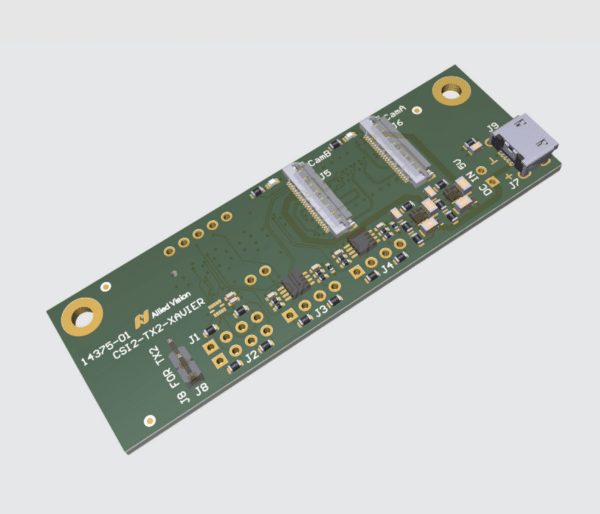
Adapter board for NVIDIA Jetson Nano and Jetson Xavier NX Developer Kit
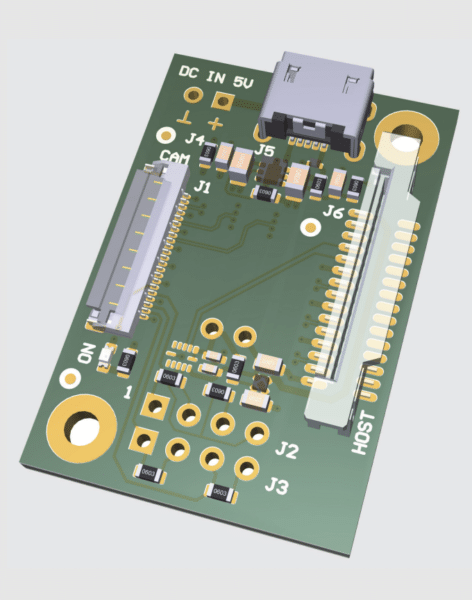
I/O cables
| 0.4m – 7P JST <-> open end for Alvium USB3 cameras |
| 3m – JST with screw lock <-> open end for Alvium USB3 cameras |
Mount adapter
Tripod mounting plate for Alvium CSI-2 and USB3 cameras. 1x UNC 1/4-20 1x M6 thread
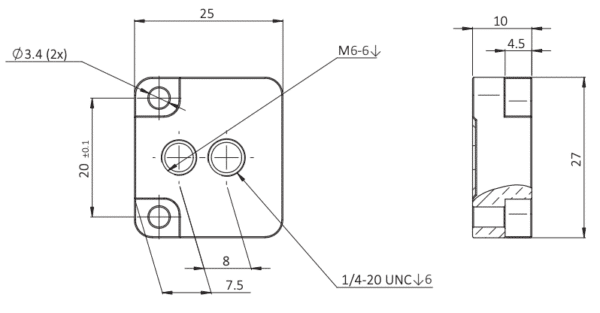
C-mount VSWIR lenses
Click HERE to view available SWIR lenses.

